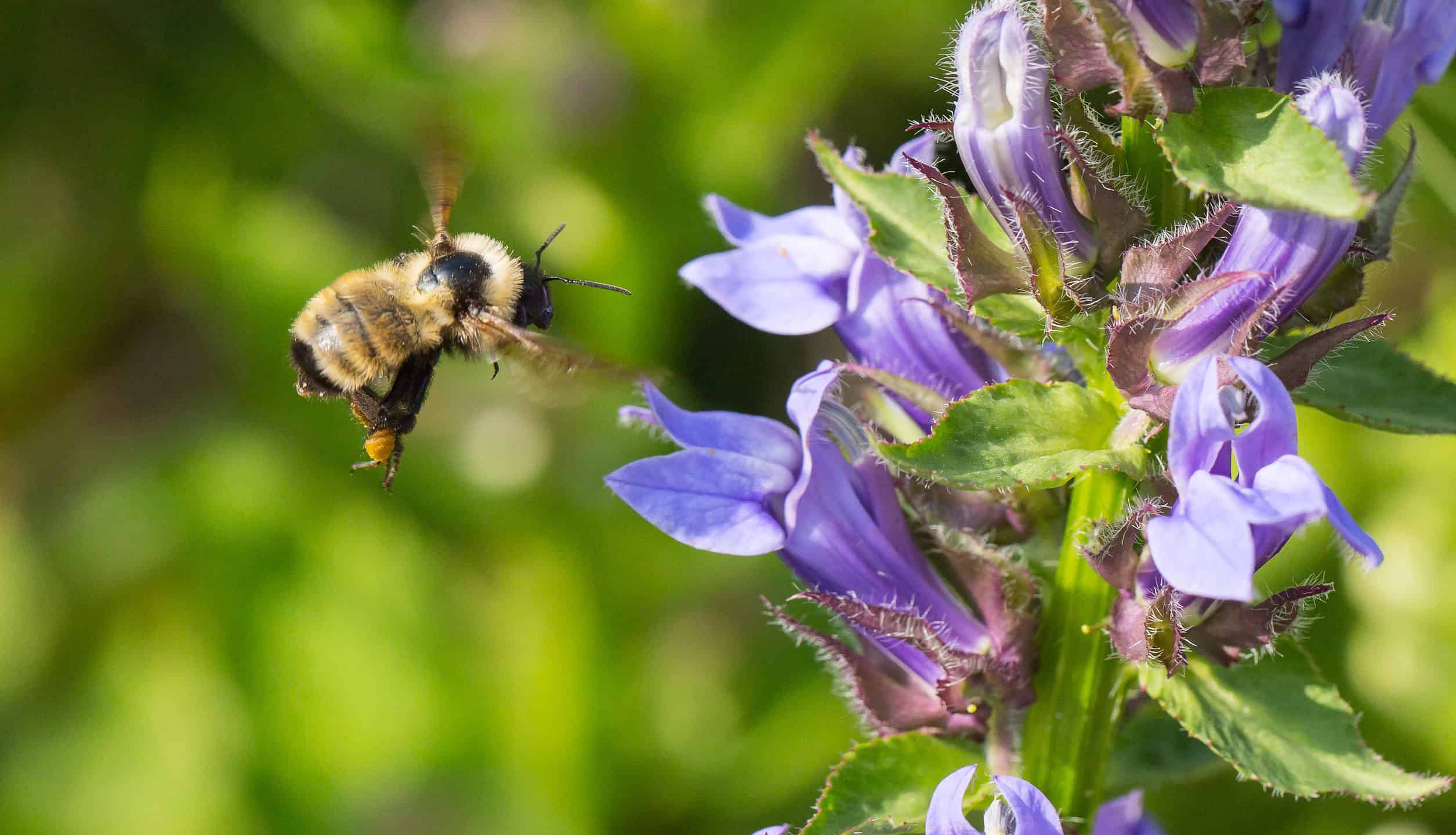↓ Continue Reading To See This Amazing Video
Colorado. The Rocky Mountain State. Located in the western United States, Colorado straddles the line between prairie and mountain. Spanning hundreds of miles from end to end, the state has a population of just under 6 million. In addition to people, Colorado is home to thousands of species of plants and animals. Everything great and small can be found in this diverse state. Here, we’ll discover six animals that are endangered and living in Colorado. We’ll also find out what you can do to help conserve the wonderful biodiversity of this incredible state.
1. Variable Cuckoo Bumblebee (Bombus variabilis)
That’s right: number one on our list is none other than the Critically Endangered variable cuckoo bumblebee. Interestingly, these animals that are endangered and living in Colorado don’t actually collect their own food, or even raise their own babies. Instead, they actually parasitize American bumble bee nests. Variable cuckoo bumblebees are only occasionally seen in the plains region of Colorado. Their main threats come from pesticides, habitat loss, climate change, and disease.
©USGS Native Bee Inventory and Monitoring Laboratory / CC BY 2.0 – License
2. Suckeye Cuckoo Bumble Bee (Bombus suckleyi)
Currently listed as Critically Endangered, suckeye cuckoo bumble bee populations have declined drastically in recent years. Like the variable cuckoo bumblebee, they parasitize other species of bee for nest building and offspring rearing. These animals that are endangered and living in Colorado look like your typical bee—winged, with black and yellow stripes. Their biggest threats are pesticide use, loss of habitat, disease, and climate change. Additionally, unlike the variable cuckoo bumblebee, suckeye cuckoo bumble bees are capable of pollinating and gathering their own food.
©iStock.com/Wirestock
3. Rio Grande Silvery Minnow (Hybognathus amarus)
Now considered Endangered, the Rio Grande silvery minnow once occupied the waters of the Rio Grande and Pecos Rivers. The Rio Grande’s headwaters lie in south central Colorado, where the Rio Grande silvery minnow is now considered largely extinct. In fact, these tiny fish occupy less than 10% of their historic range. Rio Grande silvery minnows grow to about 4.5 inches long and swim in schools. Adults live up to three years, and, as their name suggests, have silvery scales and delicate bodies. The biggest reasons for this species’ decline are pollution, drought (caused by climate change), invasive species, disease, and dams.
©Aimee Roberson / Public Domain – License
4. Yellow Bumblebee (Bombus fervidus)
Perhaps the most famous of all bumblebees, the yellow bumblebee is on a global decline. They’re currently listed as Vulnerable, and have largely disappeared from the grasslands and prairies they once occupied. Yellow bumblebees have very little black on their bodies; they’re mostly yellow, but for a single stripe, their heads, and their legs. Worker bees grow up to half an inch in length, whereas queen bees may grow up to one inch long. These animals that are endangered and living in Colorado face threats from many different sources. These include pollution, pesticides, disease, invasive species, climate change, loss of habitat, and more.
©Elliotte Rusty Harold/Shutterstock.com
5. Roundtail Chub (Gila robusta)
Like many animals that are endangered and living in Colorado, the roundtail chub is regionally extinct in many of its former waters. These small sport fish can be found in parts of western colorado, as well as Utah, Wyoming, New Mexico, and Arizona. They’re currently listed as Vulnerable, with an ever declining population, and live only in fresh water. Additionally, roundtail chub have a relatively long life, living up to an estimated 23 years. Their biggest threats are dams and other water management systems, invasive species, disease, and agricultural practices. Despite their Vulnerable status, some areas still allow fishing of roundtail chub.
©Marine discovery, CC BY-SA 4.0 – License
6. Ottoe Skipper (Hesperia ottoe)
The final entry on our list of animals that are endangered and living in Colorado is the Ottoe skipper. These butterflies are listed as Endangered, and occupy only a fraction of their historic homeland. Ottoe skippers are a strictly grassland species that have suffered greatly from the loss of native habitat. Also known as a “grass skipper”, Ottoe skippers have golden-orange wings with darker markings along the edges and bodies. Females are usually duller, as well as darker, than males. Their biggest threats come from loss of native prairie, pesticide use, climate change, and disease.
©Northern Prairie Wildlife Research Center – USGS, Public domain, via Wikimedia Commons – License
Conclusion
Globally, conservation is more important now than ever before, and Colorado is no exception. Colorado is home to an exceptional amount of biodiversity, including butterflies, fish, and bumblebees. But, without careful, conscientious conservation, we risk losing many species altogether. But, what can you do to help? Start by learning more about Colorado’s conservation initiatives, and what residents and visitors alike can do to help preserve this incredible state. Remember, even you can make a difference in the health of our planet.
